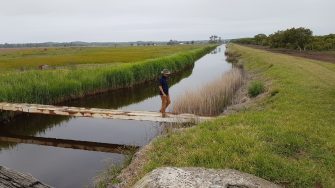Eight WRL students complete PhDs in six-month period
Over the first six months of 2022, the UNSW Water Research Laboratory (WRL) saw an unprecedented number of PhD students complete their research or officially graduate.
Over the first six months of 2022, the UNSW Water Research Laboratory (WRL) saw an unprecedented number of PhD students complete their research or officially graduate.

Over the first six months of 2022, the UNSW Water Research Laboratory (WRL) saw an unprecedented number of PhD students complete their research or officially graduate.
Eight students explored a range of topical water issues across coastal and environmental engineering and water resources—with all projects linked to improving understanding and minimising harmful impacts of climate change.
WRL Director Professor Denis O’Carroll said that it was a fantastic achievement for WRL to mentor eight PhD students to completion in one year.
“These students have made very important contributions to the impact of climate change on water quality and coastal vulnerability and infrastructure that can help mitigate against these impacts,” said Prof O’Carroll.
“Their work will undoubtedly have important impact across a range of disciplines in the decades to come.”
Reflecting on their PhDs, the students themselves were proud of their achievements and grateful for the support provided by staff, supervisors and peers.
Shuang Liu said, “I really enjoyed undertaking my PhD studies in UNSW. My supervisors, A/Prof. Fiona Johnson, A/Prof. William Glamore, and Dr. Bojan Tamburic are excellent mentors and very supportive. I feel comfortable and grateful for being part of a great and friendly environment; the staff, researchers and students here provide me with a lot of emotional, social and academic support. I had many sweet and memorable moments in the past four years.”
Jamie Ruprecht said, “It is a profound learning experience and life-long personal accomplishment to complete a PhD. Throughout my studies at UNSW, I navigated through the wins, frustrations, and uncertainties of bringing together the fields of science and engineering, while I adjusted to the world of academia after several successful years working in industry at UNSW WRL. This was made possible by the guidance and support of my outstanding supervisory team and network of professional colleagues, family and friends.”
Ahmed Nashwan Abdul Matheen said, “I really enjoyed my time at WRL. The people I’ve met over the four years and the things I’ve learnt from them will stay with me forever. I couldn’t have asked for a better place and a better group to work with.”
Congratulations to the eight PhD students, whose research is summarised below.